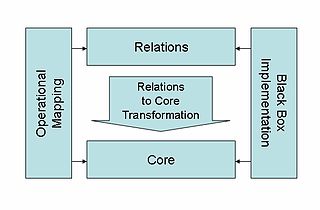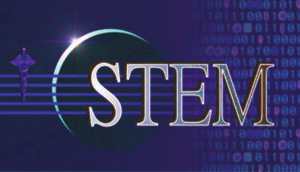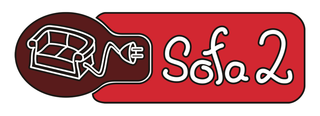Related Research Articles

Eclipse is an integrated development environment (IDE) used in computer programming. It contains a base workspace and an extensible plug-in system for customizing the environment. It is the second-most-popular IDE for Java development, and, until 2016, was the most popular. Eclipse is written mostly in Java and its primary use is for developing Java applications, but it may also be used to develop applications in other programming languages via plug-ins, including Ada, ABAP, C, C++, C#, Clojure, COBOL, D, Erlang, Fortran, Groovy, Haskell, JavaScript, Julia, Lasso, Lua, NATURAL, Perl, PHP, Prolog, Python, R, Ruby, Rust, Scala, and Scheme. It can also be used to develop documents with LaTeX and packages for the software Mathematica. Development environments include the Eclipse Java development tools (JDT) for Java and Scala, Eclipse CDT for C/C++, and Eclipse PDT for PHP, among others.
A platform-specific model is a model of a software or business system that is linked to a specific technological platform. Platform-specific models are indispensable for the actual implementation of a system.
Model Driven Architecture (MDA) is a software design approach for the development of software systems. It provides a set of guidelines for the structuring of specifications, which are expressed as models. Model Driven Architecture is a kind of domain engineering, and supports model-driven engineering of software systems. It was launched by the Object Management Group (OMG) in 2001.
Model-driven engineering (MDE) is a software development methodology that focuses on creating and exploiting domain models, which are conceptual models of all the topics related to a specific problem. Hence, it highlights and aims at abstract representations of the knowledge and activities that govern a particular application domain, rather than the computing concepts.

QVT (Query/View/Transformation) is a standard set of languages for model transformation defined by the Object Management Group.

Eclipse Modeling Framework (EMF) is an Eclipse-based modeling framework and code generation facility for building tools and other applications based on a structured data model.
The Graphical Editing Framework(GEF) is an Eclipse project that provides framework and end-user components related to graphical applications.
Generic Eclipse Modeling System (GEMS) is a configurable toolkit for creating domain-specific modeling and program synthesis environments for Eclipse. The project aims to bridge the gap between the communities experienced with visual metamodeling tools like those built around the Eclipse modeling technologies, such as the Eclipse Modeling Framework (EMF) and Graphical Modeling Framework (GMF). GEMS helps developers rapidly create a graphical modeling tool from a visual language description or metamodel without any coding in third-generation languages. Graphical modeling tools created with GEMS automatically support complex capabilities, such as remote updating and querying, template creation, styling with Cascading Style Sheets (CSS), and model linking.
Apache Camel is an open source framework for message-oriented middleware with a rule-based routing and mediation engine that provides a Java object-based implementation of the Enterprise Integration Patterns using an application programming interface to configure routing and mediation rules.

The Spatiotemporal Epidemiological Modeler (STEM) is free software available through the Eclipse Foundation. Originally developed by IBM Research, STEM is a framework and development tool designed to help scientists create and use spatial and temporal models of infectious disease. STEM uses a component software architecture based on the OSGi standard. The Eclipse Equinox platform is a reference implementation of that standard. By using a component software architecture, all of the components or elements required for a disease model, including the code and the data are available as software building blocks that can be independently exchanged, extended, reused, or replaced. These building blocks or plug-ins are called eclipse "plug-ins" or "extensions". STEM plug-ins contain denominator data for administrative regions of interest. The regions are indexed by standard (ISO3166) codes.

SOFA 2 is a component system developed by Distributed Systems Research Group at Charles University in Prague. It provides many advanced features: ADL-based design, behavior specification and verification based on behavior protocols, software connectors supporting different communication styles and providing transparent distribution of applications. SOFA 2 can be used not only for modeling component-based applications but also as a complete framework supporting all the stages of an application lifecycle from development to execution.

Apache Pivot is an open-source platform for building rich web applications in Java or any JVM-compatible language. It is released under the Apache License version 2.0.
Acceleo is an open-source code generator from the Eclipse Foundation that allows people to use a model-driven approach to building applications. It is an implementation of the "MOFM2T" standard, from the Object Management Group (OMG), for performing model-to-text transformation.
Franca Interface Definition Language is a formally defined, text-based interface description language. It is part of the Franca framework, which is a framework for definition and transformation of software interfaces. Franca applies model transformation techniques to interoperate with various interface description languages.

YAKINDU Statechart Tools is a tool for the specification and development of reactive, event-driven systems with the help of finite-state machines. It comprises a tool for the graphical editing of statecharts and provides validation, simulation, and source code generators for various target platforms and programming languages. YAKINDU Statechart Tools are available with standard and professional editions, with no-cost licenses for non-commercial resp. academic usage. Users are coming from both industry and academia.

Sirius is an open-source software project of the Eclipse Foundation. This technology allows users to create custom graphical modeling workbenches by leveraging the Eclipse Modeling technologies, including EMF and GMF. The modeling workbench created is composed of a set of Eclipse editors which allow the users to create, edit and visualize EMF models.
Oracle TopLink is a mapping and persistence framework for Java developers. TopLink is produced by Oracle and is a part of Oracle's OracleAS, WebLogic, and OC4J servers. It is an object-persistence and object-transformation framework. TopLink provides development tools and run-time functionalities that ease the development process and help increase functionality. Persistent object-oriented data is stored in relational databases which helps build high-performance applications. Storing data in either XML or relational databases is made possible by transforming it from object-oriented data.
References
- ↑ "Eclipse GMF Runtime 1.12.1" . Retrieved 6 July 2019.